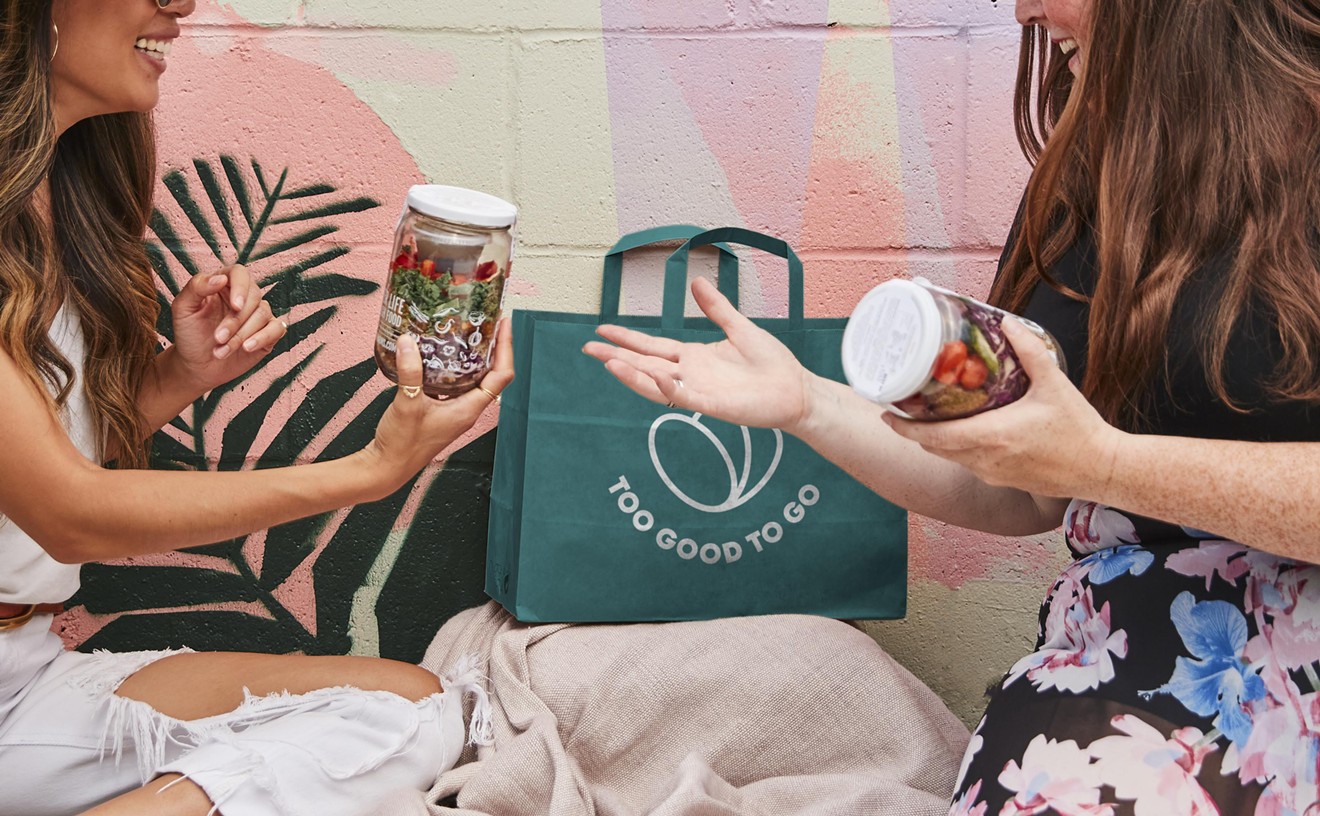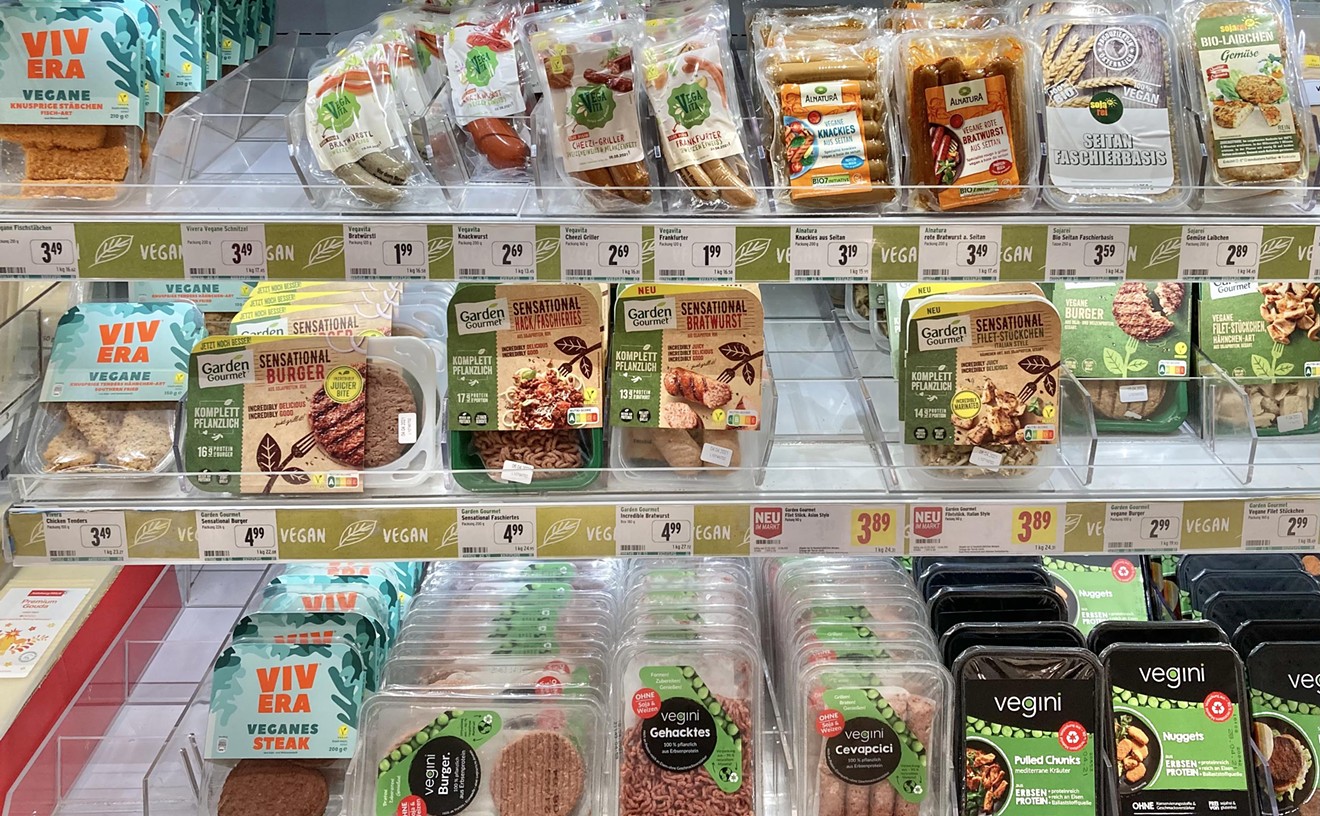The problem with traveling to eat is that by 11 a.m., with terrible coffee, pastries, tortillas and seafood in my stomach, I was full to the point of wanting nothing more than a nap in an air-conditioned room. You know that sun that spreads out throughout the Valley of the Sun? That same sun focuses all its skin-searing intensity on the City of the Sun, as Hermosillo is known. Hermosillo is also known as the birthplace of Minervaland -- and I visited last month for the first time in many years.
The only thing to get me past feeling hot, full, and sluggish was the need to do some shopping and score that perfect pair of cowboy boots. Time to shop and, yes, eat.
See Also: --Where to Eat and Drink in Hermosillo, Sonora --Sonoran Dog Skirmish: Nogales Hot Dog vs. El Sabroso Truck
Northern Mexicans, Norteños, really like a few things: carne asada, giant flour tortillas, and cowboy boots -- well-polished, thick-heeled, pointy-toed, stomping-on-the-sidewalk cowboy boots. If you have a few days and a specific boot design in mind, Botas Old West will be your best bet. With an in-house factory (although there are many in town), this shop can outfit you and your fit with a boot in almost any animal leather, any toe design, and any embroidery pattern and color you wish. If custom is not for you, as it wasn't for me, browse the huge selection, with basic boots starting around MEX$900 ($75), but most are priced around MEX$2,000 ($165). Sadly I didn't find my dream boots in this shop, so I headed to the shopping corridor in the center of Hermosillo, concentrated in a few blocks of Calle Mariano Matamoros. But not without a root beer stop first.
Root beer is not available bottled in Mexico, and though many Mexicans do not actually like root beer, comparing it to the taste of soap, Hermosillo is studded with stands with a walk-up bar and barstools, selling cold refreshing root beer. When I was a kid, this was creamy draught root beer served in frosty glass mugs, and thinking back, trips to these root beer shacks may explain my love for beers of the stout variety. Sadly, it is now your garden variety root beer in Styrofoam cups, but it is still refreshing.
And now it was time to hit Matamoros. The stretch between Boulevard Luis Encinas Johnson and its end at Aquiles Serdán is densely packed with traffic and crowds, as well as clothing and shoe shops, a few electronics, music, and book shops, and the occasional ice cream and snack bars mixed in. Actually, a lot of snack shops packed in at the walk 30 feet and pick up a new snack pace. Only in Mexico can I imagine there being a quick-service sushi roll place with both a sidewalk outpost and a motorcycle delivery guy.
It was time to focus on cowboy boots. Mexico has a fantastic leather and shoe industry, and Matamoros is filled with shoe and boot shops, to the point of making a choice difficult. I worked my way down the boot shop windows in one direction of the street, stopping at La Real Michoacana for a lime paleta, worked my way back the other direction, stopped at La Real Michoacana again, this time for a fruit cocktail of macerated mixed fruits and topped with sweet cream. Nothing fancy about fruit and cream, but given the produce as good as is grown in Mexico, there is little need for anything fancier. And then I made it into Delgado Boots, where I found them, Mexican-made buttery-soft black deerskin boots. At MEX$1,600 ($134), they weren't the huge bargain I was hoping for, but a high-quality boot will last a long time, and there's no price to be put on the perfect pointy black toe.
Aside from boots, the other big draw of Matamoros is the Mercado Municipal José Maria Pino Suárez, or the municipal meat and produce market. This 102-year-old market is teeming with gorgeous meat cut on site, some of the best-looking beef liver I have ever seen, and avocados the size of my palm. Two of those beauties made it into my bag with a price tag of MEX$20 ($1.67), they definitely were not as cheap as they used to be, but you can buy a single flawless avocado at your local Whole Foods for that. I stocked up on jamoncillo (milk fudge) from one of the specialty vendors at the market and asked for a recommendation from the friendly vendor on where to eat at the market. He recommended the Gallina Pinta from one particular counter, and despite the 100-degree temperature outside, I dipped a spoon into a hot hearty bowl of soup.
It is neither chicken as gallina would indicate, nor pinta, or red. It is instead faintly green from pureed Anaheim chile and made flavorful by oxtail and short rib, paired with pinto beans and hominy. There's no real story behind the name, but forget that and dive in.
If you need a caffeine jolt while at the market, skip the American style coffee on offer, and ask instead for a café colado, thick stovetop percolator coffee, strained directly into a cup and cut with as little or as much warm milk as you like.
Just to the southwest of the shopping, where Calle Obregon -- a historic tree-lined street where I'd encountered a sidewalk dance the night before -- dead-ends into Calle Jesús Garcia, sits the small but beautiful Parroquia del Carmen. Built in 1837, it's where the church's patron saint, the Virgen del Carmen, is carried out in procession each July 16. Visible from the church's door and located at the foot of the Cerro de la Campana is a fortress-like 1907 building, housing the Museo de Sonora, with the extra touch of having a few former prison cells open to visitors in this sturdy stone structure.
Sadly the museum was closed for repairs during my visit, but I still remember the very creepy dark cells from a grade-school field trip. These stony cells were in operation till 1979, making me wish I had asked around for stories from some old-timers.
At this point in the afternoon, with the sun high and no clouds in the sky, it was time to head deep indoors to enjoy some air conditioning and meet up with a tall and cool redhead. I met her at the American-style University Sports Bar and drank her right up. Tecate is frequently served in its skinny-bottle version, rather than in my preferred can. (On a side note, saying just "Tecate" will get you the question "roja or light". As Tecate Light has yet to enter into my beer reality, I was a little surprised at having to adjust my ordering method. Oh, well.)
Cooled off, I headed to the nearby Museo de Arte de Sonora, a modern and airy building housing a changing modern art collection, but sadly very empty on an otherwise very active Hermosillo Saturday.
Once dusk hit, the only place I wanted to be was to the Universidad de Sonora, where, across the street from the tall mid-century library building, vendors hawking the infamous and delicious bacon-wrapped Sonoran hot dog abound. I grew up knowing these as an Hermosillo dog. Sadly, I also grew up with better specimens than what I encountered that evening. With a barely there hot dog and less-than-fresh ingredients, this was one case in which my nostalgia for a childhood food did not elevate a substandard meal to a pleasurable level. I was also disappointed to see French fries offered with the dogs, although that did explain the signs at various Phoenix-area joints claiming the authenticity of fries with Sonoran hot dogs.
Full again -- and it now being dark -- I drove up the winding road to the top of the not very tall but picturesque Cerro de la Campana, or Bell Hill. What used to be just a small number of crazies driving up the cobblestone road has now turned into an entire city of crazies, probably due to the now very bright floodlights turning the darkest of skies into day while on the hill. The view from the top is terrific and, honestly, the heavy traffic added an extra level of entertainment.
However, either my memory was wrong or time has changed things so much that the taco stand at the top with the cheery strings of lights, serving authentic tacos al pastor, shaved to order from the roasted pineapple-topped cone of meat that I was hoping for was not there to meet me at the summit. Instead, I found a crowded block wall building serving the newest street food craze in Hermosillo, a bag of Tostitos cut open longways, topped with guacamole, salsa, pickled jalapeños, and cheese. My crowded stomach said no thank you to this atrocity, and I went off in search of liquid nourishment instead.
Located in the historic center of town on Boulevard Hidalgo and Calle Obregon, La Barra Hidalgo is a mellow and fairly quiet spot for a tarro of draught Tecate (I still prefer the can) and to get some antojos. But beware, these bar snacks will more than likely be assembled by a server or bartender, meaning hands may not be washed before preparing, and it may take a while. Cold beer and cold service aside, it was highly entertaining to watch a snack of green olives served over a bed of ice and drizzled with soy sauce. Perhaps they were unsalted olives in need of an ice bath?
I decided to make my next drink a bit more interesting and walked into the slick-looking Pistones Food and Drank Garage and sank into a prize-winning hibiscus and chamoy-blended margarita with a salt-chile rim. I never would have ordered such a drink otherwise, but margaritas are hugely popular in Hermosillo, so I might as well do what the locals do. It was bright red, brain-numbingly cold, sweet, and boozy. And though it was delicious, there was no way I could drink more than one, as the chamoy was slowly burned a hole in my stomach.
Sundays are very sleepy in Hermosillo, with most shops and quite a few restaurants closed for business. If you're there for a Sunday, you might as well head west an hour an a bit and hit Bahia de Kino. A sunny and sleepy beach town, with tranquil warm water and plenty of fresh seafood, it is well worth the relatively short drive.
As proprietor of Muñeca Mexicana handcrafted food, Minerva Orduno Rincon makes everything from mole poblano to goat milk caramel to spiced (not spicy) cocoa. Find her at a farmers market near you.










